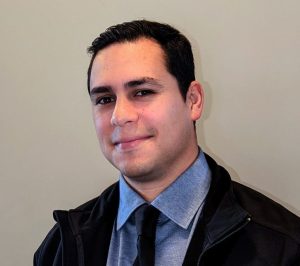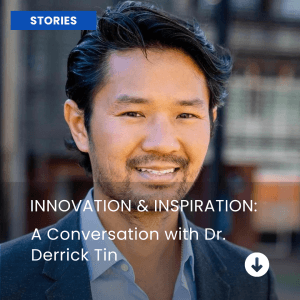
Dr. Julie G. Pilitsis, MD, PhD, MBA, currently serves as the Chair of the Department of
Neurosurgery at the University of Arizona Tucson and is the Physician Executive for Functional
Neurosurgery for Banner Health System. With a robust academic and professional background,
Dr. Pilitsis has previously held prominent roles, including Dean of the Charles E. Schmidt
College of Medicine at Florida Atlantic University, where she spearheaded the FAU Health
Network initiative. Her tenure at Albany Medical College as division chief of functional
neurosurgery and chair of the neuroscience department provided her with unique insights into
both clinical and basic sciences, allowing her to build programs from the ground up. Throughout
her career, Dr. Pilitsis has maintained an active functional neurosurgery practice and has
contributed significantly to the field of neuromodulation, with over 250 journal articles, five
textbooks, and numerous chapters to her name. Her research, which focuses on optimizing
devices for neuromodulation, continues to be supported by NIH grants. Additionally, Dr. Pilitsis
has held leadership positions in various professional organizations, such as the North American
Neuromodulation Society and the American Society for Stereotactic and Functional
Neurosurgery. Her work in deep brain stimulation for Parkinson's disease, spinal cord stimulation
for chronic pain, and intrathecal drug therapy for neuropathic pain demonstrates her dedication to
advancing pain management and improving patient outcomes.
I began in a combined bachelor’s and MD program, a six-year journey at Rensselaer Polytechnic Institute and Albany Medical College. My dad is a PhD, so science was always a part of my life. In med school, I was on a research track but couldn’t decide between science and medicine. I chose a neurosurgery residency that included a PhD, which was a rare and amazing opportunity. After a fellowship in functional neurosurgery, I had completed nine years of training. My first job was at UMass, where I focused more on clinical work than research because I didn’t have much of a research track record at that point.
At UMass, I connected with a robotic engineer at the Worcester Polytechnic Institute, which led to my first R01 grant. Later, I joined Albany Medical College and was able to garner more research resources. I eventually became chair of the basic science department of neuroscience, which was a transformative step for my scientific career.
I started training in neurosurgery at Wayne State in 1998. It was incredible to have mentors like Dr. Alexa Canady, the first female Black neurosurgeon, and other female colleagues, which was rare at the time. My colleagues and I attended Women in Neurosurgery meetings, where we received invaluable insight and support. This engagement would ultimately give the opportunity to lead the organization. I chaired Women in Neurosurgery in 2011 and later formed the Women in Neuromodulation group for the North American Neuromodulation Society in 2014. Both men and women support these organizations equally, which has led to significant improvements in diversity and inclusion.
In my lab, I work hard to create a diverse and inclusive environment where mentorship is key. I have a small army of students, ranging from eager eighth graders to experienced faculty members. This mix reflects the diversity of science, where everyone, regardless of age or academic standing, can learn and grow.
My mentorship style is based on project-based learning. I aim to teach not just scientific knowledge but also essential life skills, or “adulting.” Whether it’s guiding a research project or offering career advice, I want to equip my mentees with the tools they need to succeed both academically and in life beyond the lab.
Supporting others’ journeys has been incredibly fulfilling for me. While my own accomplishments are meaningful, I find even greater satisfaction in helping others achieve their goals. Mentorship is like nurturing a tree: the mentor is the trunk, and the mentees are the branches. Just as branches extend from the trunk, mentees grow and flourish under their mentor’s guidance, eventually becoming mentors themselves.
My research focuses on neuromodulation, particularly using external focused ultrasound to target the dorsal root ganglion in people with leg pain, like those suffering from chronic back pain with leg pain (sciatica). Our studies in rats and large animal models have shown that a single three-minute treatment can provide up to 30 days of relief, which is significant given that around 87 million people in the US are affected by this pain.
Focused ultrasound works in principal by changing membrane permeability and potentially impacting sodium channels and ectopic firing in the dorsal root ganglion, which is associated with neuropathic pain. We’ve also seen distal effects on nerve conduction, changes in the somatosensory cortex, and shifts in cytokine levels, suggesting a complex response that contributes to prolonged pain relief.
In parallel, this research also explores immunobiology, looking at potential immune components in pain modulation. Understanding these integrated physiological processes, especially inflammation, is crucial in managing pain.
Chronic pain is a big challenge in clinical practice because it’s so subjective. Traditional pain assessment relies heavily on self-reported pain scores, which can be influenced by various factors like age, sex, and ethnicity. This subjective approach has contributed to the opioid crisis, where treating pain based solely on numerical scores has not effectively addressed the underlying causes.
In response, there’s been a push for objective biomarkers to better understand and manage chronic pain. Our group under Ilknur Telkes PhD explores high-resolution EEG as a tool for assessing and predicting response to therapy, particularly for patients undergoing spinal cord stimulation for conditions like sciatica.
Our studies have shown promising results, revealing changes in alpha and theta waves in key brain regions, including the somatosensory and prefrontal cortex. By integrating EEG data with patient-reported outcomes over time, we’ve made significant strides in predicting treatment response with remarkable accuracy.
EEG technology is accessible and practical for widespread use, offering insights into pain processing mechanisms and personalized treatment strategies. Functional MRI also holds promise for further understanding the neural correlates of pain modulation. However, challenges remain, particularly with MRI compatibility with implantable devices like spinal cord stimulators. Despite these hurdles, ongoing research in this field is opening exciting possibilities for improving pain management and patient outcomes.
First, believe that you can do it. Others have done it, and you will be able to do it too. Make sure you have a support system around you to remind you of that along the way.
In research, especially in biomedicine, it’s essential to keep the patient at the forefront of your work. It’s easy to get lost in the details of scientific exploration, but never lose sight of the ultimate goal of improving patients’ lives. Every study, experiment, or clinical trial has the potential to make a difference in someone’s health and well-being. Keeping a patient-centered approach not only grounds your work in purpose but also brings a deeper sense of meaning and fulfillment.
As a researcher and clinician, it is essential to continuously learn from patients’ experiences. Their stories, struggles, and successes offer invaluable insights that can shape your research direction and clinical practice. Staying connected to patient care enhances the relevance and impact of your work and strengthens your resilience against the challenges and uncertainties inherent in the field.

Andres is an MD/PhD candidate at the University of Arizona College of Medicine, Tucson. Andres works in the Bibb lab exploring the impact of aberrant CDK5 function on neuroendocrine tumor development and progression. Andres plans to pursue a career in pediatric oncology and is particularly interested in addressing global pediatric cancer care disparities.






DISCLAIMER: ConductScience and affiliate products are NOT designed for human consumption, testing, or clinical utilization. They are designed for pre-clinical utilization only. Customers purchasing apparatus for the purposes of scientific research or veterinary care affirm adherence to applicable regulatory bodies for the country in which their research or care is conducted.